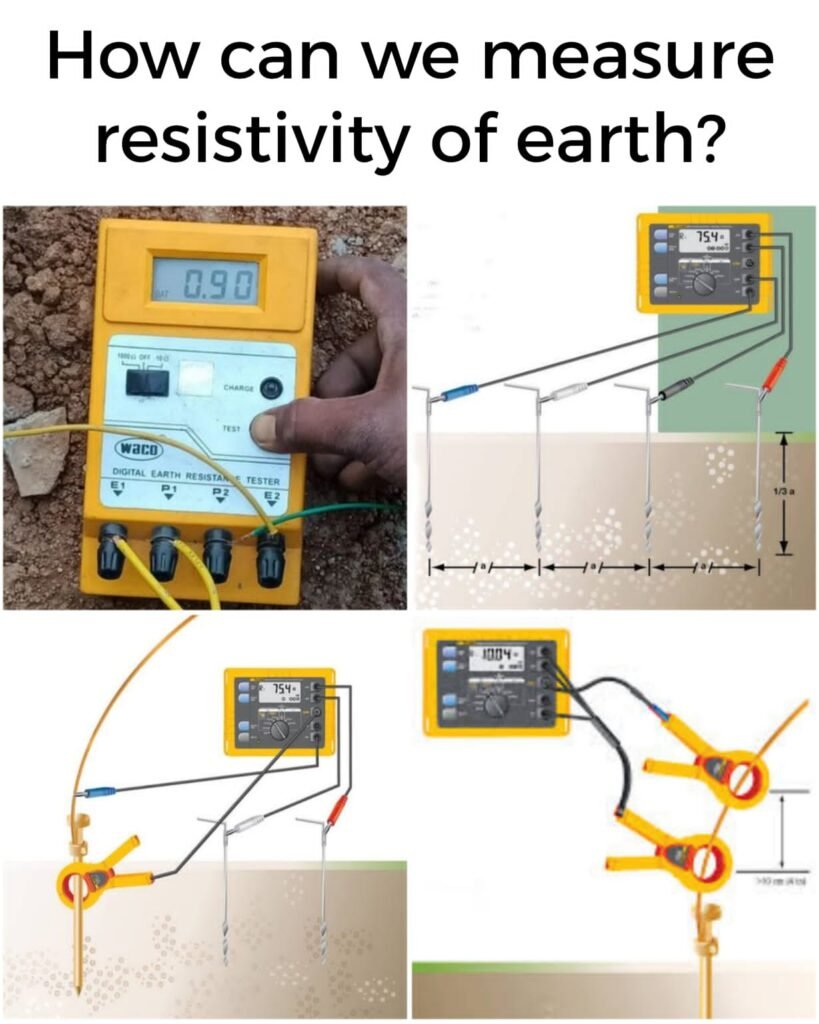How can we measure resistivity of earth?
How can we measure resistivity of earth?

Answer
There are several methods to measure the resistivity of the earth. One of the most commonly used methods is the **four-terminal method**.
In this method, four holes are made in the earth approximately uniformly spaced in a straight line.
The diameter of the holes is not more than 10% of the distance between them, and all extend to approximately the same depth, which is usually that at which we are most concerned with the resistivity.
In each hole is placed an electrode, which makes electrical contact with the earth only near the bottom.
This constitutes a four-terminal conductor whose resistance depends upon the distance between the electrodes and the resistivity mainly in a region whose linear dimensions are of the same order as the distance between the outside electrodes but does not depend appreciably upon the size of the electrodes nor the kind of electrical connection they make with the earth.
Therefore, if the depth of the holes, the distance between them, and the resistance are measured, we have data from which the effective resistivity in the vicinity can be calculated¹.
Another method is **the three-point measuring technique** which is derived from the four-point method used for soil resistivity measurements.
This method comprises an Earth Electrode to be measured and two other electrically independent test electrodes.